Foreword
Ninety-six years ago, on 18 July 1925, Adolf Hitler published his infamous book, entitled “Mein Kamph” which led to the creation of a formidable German military force. It proved to be the corner-stone of the edifice of a new nation which took on the combined might of allied forces. This 700 page tome contains an account of Private Hitler’s encounter with Indian soldiers. He was impressed by their fighting ability and indomitable spirit. This piece written by Dr Anand Kumar Sethi talks about how the Indian warriors are respected in Europe. They are seen as the saviors and liberators of their ancestors.
A Word about the Author
Born on 24 May 1945, Dr Sethi graduated from IIT Bombay, in 1965. He studied Solid State Electronics, Electronics and Telecommunications, International Law and International Business. Dr. Sethi has about four decades of active involvement in international joint ventures and business particularly inbound ventures, projects, and investments into India. Dr. Sethi has been an advisor to several international development Financial Institutions and other entities principally from Denmark, Norway and Finland. He is a founder member of the Indo Finnish Business Forum and is currently the Chairman of this body. More recently, Dr Sethi has turned from a technocrat to a historian and writer
Dr and Mrs. Sethi are residents of Dagshai and are very actively involved in its cleaning up and ‘renewal’ of the many historical sites there. With an abiding interest in history, Anand has curated and furnished exhibits in the setting up of the Dagshai Jail Museum which is designated as a heritage site by Himachal Tourism and a listed as 5- star attraction on ‘Trip Advisor’.
Anand’s email address is: anandkumar.sethi@gmail.com
“Wahe Guru Ji! Rang in his ears, the famous battle,
And since three days Hurnam had seen,
On Flanders plains, from fierce Messines,
To Festubert and Neuve Chapelle,
‘Mid festering bogs and scenes of hell,
How Khalsa soldiers die”.
(From: “Hurnam Singh”, by (Late) General Sir James Willcocks – Commander, India Corps; 1914)
28th OCTOBER 1914 – WHEN THE INDIA CORPS ALMOST CHANGED THE HISTORY OF THE WORLD!
by Dr. Anand Kumar Sethi
Photo 1
Menin Gate (Photo 1) is at the very centre of the old part of Ypres (also known as Ipres or, as the ‘Tommies’ called it, ‘Wipers’) – a smallish old Belgian medieval town in Flanders, renowned in the past for its textile trade. This trade was largely conducted out of the grand building named ‘Lakenhalle’ (‘The Cloth House’) now housing the Flanders Fields Museum related to the ghastly killing fields in the Flanders area during World War 1.
During its historical past, from the 1st century B. C. onwards, Ypres has seen its share of battles and wars involving the Romans, the French, the Dutch, the Belgians, the English, the Crusaders and even the Habsburg Emperor’s forces. The Ypres area is thus replete with fortifications, and defendable water bodies. Though used to wars and military actions over the years, Ypres and Flanders had seen nothing like what happened in that area for the two years or so starting in the autumn of 1914. It just unfortunately happened to be situated in the direct path of the invading German Army trying to reach the critical Channel Ports as part of their ‘Schlieffen Plan’ (named after the former German Chief of General Staff, Count Alfred von Schlieffen).
A major objective of the Schlieffen Plan was to capture the critical ports of the English Channel such as Boulogne, Dunkirk, Calais etc. The idea was to prevent large number of British troops from landing and going into action in support of their French allies even though the Kaiser had termed the British Expeditionary Force (B. E. F.) as that ‘contemptible little army’.
Not only the Kaiser, the German Commander in the Flanders Area – Gen. Eric von Falkenhayn, as well as most of the German Army fed by media misinformation, was however in for a huge surprise! First of all, the brave little Belgian Army under the direct command of their King Albert 1 attacked the Germans at the Battle of Coutrai, near the River Yser and actually achieved a salient several kilometers deep. Then on Oct. 26th, 1914 the Belgians managed to open the sluice gates of the dam on the River Yser at Nieuwpoort. The rising flood waters delayed any heavy German advance towards the Ypres area. This gifted their allies, the French and the B.E.F. two extremely critical days. Reinforcements arrived at the front during those two days, not via the Channel Ports (as the Germans had anticipated) but had from the Port Of Marseille transported all the way by various means of transport – goods trains, trucks, and even convoys of London ‘decker’ buses, specially adapted for the purpose. The ‘India Corps’, including the Jullundur Brigade, arrived at Flanders in the nick of time to take on the Germans! Cold, tired and hungry they were yet the spirits were high!
Over the course of the next many months, from October 1914 right up to Armistice Day on 11th November 1918 the Flanders area saw many major battles and skirmishes including the four Battles of Ypres, the Battle of Neuve Chapelle, the Battles of Loos, Festubert, Arras and more. Many thousands on both sides died. Countless were seriously injured. So many names as well as their fate unknown! They are still, to this day, finding mortal remains in the Flanders area, allied as well as German!
To quote from the ‘Visit Flanders’ post on this memorial at Menin:
“Historically, the Menin Gate of Ypres was simply a crossing point over the moat and through the ramparts of the old town fortifications, on the road to the nearby town of Menin. It had a special significance for the troops though: it was from this spot that thousands of soldiers set off for the part of the Front called the Ypres Salient – many destined never to return.
This, the Menin Gate, became the chosen site for one of the grandest and most haunting memorials of the Great War. The new Menin Gate was built in the form of a Roman triumphal arch, designed by Sir Reginald Blomfield. During the inauguration ceremony, in July 1927, the ‘Last Post’ was played for the first time by buglers from the Somerset Light Infantry. Since 1928, buglers from the Last Post Association have been playing the Last Post in this very spot every night at 8 p.m., regardless of the number of attendants or weather conditions.”
Photo 2
The large imposing walls of this grand monument are inscribed with the names of some 55,000 British, Indian and Commonwealth soldiers who died in the battlefields of Flanders but with no known grave or individual last resting place. There is also a special memorial to the unknown Indian soldier (Photo 2). There were so many names the walls in and around Menin Gate actually ran out of space. Another 35,000 or so names had to be inscribed on the walls of the Tyne Cot Cemetery to the east of Ypres. Many names are familiar sounding – they are those of some of the thousands of Indian soldiers who went to fight for an unknown, unseen King but not for their own country.
Starting with the very first Indian casualty from the 57th Wilde’s Rifles (F.F.), Naik Laturi (from Himachal Pradesh) one sees names such as Sepoy Badan Singh (45th Rattray’s Sikhs), Havildars Bhagat Singh / Sohan Singh / Sunder Singh / Surain Singh / Waryam Singh, all of the 47th Sikhs and many, many others.
The ‘normal’ daily ‘Last Post’ ceremony starts with all traffic in the area being stopped at 19.30. The Buglers (usually from the local Fire Brigade) arrive promptly at 19.55. At 20.00 after a ‘call to attention’ with all those attending reverently standing up, there is the sounding of the ‘Last Post’. After a minute of silence, the buglers sound the ‘Reveille’ ending the solemn ceremony.
There are however a few evenings when a very special ‘Last Post’ ceremony is held. Such as the one on the day (Oct. 27th, 2014), my wife and I, along with several members of the Jullundur Brigade Association (of which I am a proud member) attended – marking the centenary of that terrible war. In the extended special ceremony, after the ‘Last Post’ bugle call (with flags dipped in salute and all adorning caps saluting), an exhortation is read out by a visiting dignitary, The exhortation is the fourth verse of Laurence Binyon’s poem “For the fallen”. Standing in the centre of the ‘Hall of Memory, under the Arch the following poignant words are spoken:
“They shall grow not old, as we that are left grow old,
Age shall not weary them, nor the years condemn,
At the going down of the sun and in the morning,
We will remember them.”
Following a minute of silence a Piper plays a lament. After the laying of wreaths the Reveille is called ending the evening’s most moving ceremonies.
The Last Post ceremony of the evening of Oct. 27th, 2014, when we as part of the Jullundur Brigade Association attended, was one of those very special ones – it marked the Centenary of World War 1 (Photo 3). After the ‘exhortation’ as well as the Piper’s lament many wreaths were laid. All of us from India attending that ceremony thought about our valiant country men who had breathed their last in the ‘killing fields’ of the region. Did their families even visualise where their loved ones had finally been laid to rest?
After the ceremony we started to walk through the local town square towards the Lakenhalle where the official banquet was to take place. The Town Square was reasonably well lit. The buildings around also had some lights turned on for the occasion – very European, muted, not over done! We had reached half way to Lakenhalle (Photo 4) when suddenly out of nowhere I heard sounds of someone rapidly running behind me. The next thing I knew was a pair of arms had gripped me from the rear. Was this a mugger’s attack? I managed a sideways glance back and what do I find. It is a smiling old lady who had her arms tight around me and in an instant was pointing at my cap and repeatedly uttering ‘Indian’, ‘Indian’ with tears in her aged eyes!
Suddenly it struck me! Of course, I was wearing the 8th Gorkha Rifles ‘Dhakai’ Cap at the request of the Commanding Officer of the Battalion stationed where we live (the battalion having taken part in the Flanders campaign) and we looked positively Indian, what with my wife Deepa wearing a Sari. In a mixed dialogue of the Lady’s French and Flemish and my English with a negligible smattering of French we figured out what the old lady was trying to convey to me. She was trying to express her deepest gratitude for India and Indian troops for having saved her people, her city, her country and indeed European civilization, a hundred years ago. She had been waiting to do this for years but had not encountered an Indian until that evening. The poignancy of the ‘Last Post’ ceremony included, nothing has touched me more than that extraordinary act of the lovely old lady!!
Photo 5
So what exactly was the Indian contribution in the actions at Flanders? Did the India Corps do anything so spectacular that made an aged lady in the heart of Ypres hug an Indian? Of course some little bit one knew from what we had learnt in Senior Cambridge history lessons. Some one knew from the annals of the Jullundur Brigade Association (Photo 5). Further inputs we received through the lecture delivered at that evening’s official banquet delivered by an official British Military Historian. But all these were principally from a British lens! We needed to know more – the real story as it were!
Next morning we came down from our hotel room for breakfast in the dining hall. Crossing the Lobby I noticed three identical looking books being displayed on top of the Reception Desk. Indeed, it was the same book* but were English, German and French language copies. The cover had a photograph of a small group of soldiers in German Army uniform. One of the troopers looked very familiar indeed. I stopped to pick up the edition in English. Turned the book over and there on the rear cover a photograph of the same soldier, by himself, walking down the cobbled street outside our hotel – in German uniform, wearing a great coat, a rifle slung over the right shoulder and wearing that extraordinary German helmet, the spiked ‘Pickelhaube’.
Recognition was instant – yes he definitely was, arguably the most notorious and infamous of any soldier ever to wear a military uniform!!! This book just had to be bought and read. It took just a day to read this book authored by Thomas Weber, a Professor of European and International History at the University of Aberdeen in Scotland. Based on German archival material Prof. Weber details the actions at Ypres and the Flanders area from the German perspective. Correlating the German and British versions the following is what ensued there in the Flanders region highlighting the role of the India Corps.
On October 21st, 1914 the British Expeditionary Force (BEF) mainly comprising of I Corps (Gen. Douglas Haig) and IV Corps (Gen. Henry Rawlinson) then under the overall command of Field Marshal Sir John French, were just about holding their ground against the 6th German Army of Crown Prince Ruprecht of Bavaria and the 4th Army under the command of Albrecht, Duke of Wurttemberg on a line running roughly from Yser in the north through Ypres and La Bassee down to Lens and Arras in the south. The fighting was fierce. The Germans were in great spirits as they sensed a breakthrough to the Channel ports of Dunkirk, Calais and Boulogne was within their grasp. Pinned down, the BEF were in great danger of being cut off. Neither escape nor reinforcements through the ports was going to be possible.
Then suddenly the spirits at BEF lifted. Over Oct. 21st and 22nd, nineteen columns of Indian troops arrived. The India Corps had reached Flanders Fields! With the Belgian compatriots having opened the flood gates at the River Yser the Germans were suddenly and unexpectedly faced with a fight on their hands!
The India Corps comprising of the 3rd Lahore Infantry Div. (7th Ferozepur / 8th Jullundur Brigades); 7th Meerut Infantry Div. (19th Dehradun / 20th Garhwal / 21st Bareilly Brigades), 1st Indian Cavalry Div., and the 2nd Indian Cavalry Div., were under the overall command of Lt. Gen. Sir James Willcocks. Lt. Gen. C. A. Anderson commanded the Meerut Division whilst the Lahore Division was commanded by Lt. Gen. H. B. B. Watkis.
The Lahore Division comprising of troops from the Cantonments of Lahore, Jullundur, Amritsar, Multan, Montgomery, Ferozepur, Dalhousie, Dharamsala, Bakloh, Ambala, Solan, Sabathu, Kasauli and of course Dagshai arrived at the front to a sort of ‘baptism by fire’. Improperly clad for the already cold weather of Europe and ill equipped in terms of weapons (the new Lee Enfield Mk III Rifles had not been issued), the Division was marched on Oct. 22nd, 1914 to an area called Wallon Cappel about 30 kms north west of Neuve Chapelle or about the same distance south west of Ypres. Just about that time the Germans started a major offensive from La Bassee in the south up to Menin and Ypres in the north.
Early morning of 23rd October, 1914 the Lahore Division received orders to march post haste to a place called Estaires, about 5 kms, north – west of Neuve Chapelle. The 57th Frontier Force (Wilde’s Rifles) along with the Connaught Rangers (later in 1920 a battalion of this Regiment of Irish Catholic troopers were to mutiny in Dagshai against their English Officers) of the Division immediately saw action and very soon had their first German prisoners of war belonging to the 9th Dragoons and 1st Bavarian Jaegers.
The annals of the Jullundur Brigade Association describes the somewhat chaotic scenario as “The rushing in of Indian troops into battle without proper plans or equipment was an indication of the desperation of the situation but could hardly be considered an auspicious beginning, with troops split up and pushed in piecemeal by battalions, by half battalions and even companies, in totally strange environment, completely isolated from their own Commanders and Brigades, in appalling weather conditions and facing terrible fire and attack from superior odds.”
On October 25th, 1914 afternoon the positions of the 1st Manchester Battalion, 47th Sikhs, 59th Frontier Force (Scindes), and 15th Sikhs of the Jullundur Brigade came under a heavy attack. With some reinforcements coming in from the 34th Pioneers, this attack was repulsed. Again, on October 26th, 1914 the Germans massed their troops against the Jullundur Brigade with 59th Frontier Force (Scindes) and 15th Sikhs holding the centre. Once again this new German attack was beaten back.
Messages of praise and congratulations came pouring in for the extraordinary performance of the Jullundur Brigade including a personal one from Lord Kitchener, the Secretary of State for War. Over a period of two days, without sleep, with little or no food and in terrible weather conditions the Brigade had held off multiple determined German attacks.
However on October 26th, 1914 under the cover of the heavily wooded forest of the Bois du Biez another formation of the Germans had managed to infiltrate into the area North East of Neuve Chapelle. Despite the heroic actions of the British 7th and 9th Brigades of 3rd British Infantry Division the Germans prevailed. Neuve Chapelle itself was captured. The German 16th RIR (Reserve Infantry Regiment), Bavarian Infantry now controlled that sector. Further trouble came when the Germans broke through to the south of Neuve Chapelle after mauling the West Kents, Wiltshires and South Lancashires of the British Army.
The entire front in that area was now seriously threatened. A breakthrough here by the Germans would require a major retreat to a new defensive position closer to the Channel Ports! Can the Indians do something? An order to counter attack the Germans was issued late in the evening of October 27th, 1914. The attack on Neuve Chapelle was to begin early morning of October 28th however dense fog delayed the launch of the attack to 11.15 a.m. Once again, reminiscent of Gen. French’s handling of operations in the Boer war there was complete confusion in terms of orders with the British formations not coordinating with the Jullundur Brigade. Although the opening artillery barrage went off on time the advancing infantry ended up comprising only of four companies of the Indians of the Jullundur Brigade – two from the 47th Sikhs and the 20th and 21st companies of the Sappers and miners on their flanks. The support from the 9th Bhopal was check mated by very heavy German firing that restricted them from moving out of their trenches.
With a truly valiant charge the four companies of the Jullundur Brigade, dashes alternating with heavy firing covered the nearly 600 metres separating the two armies. There were heavy casualties on both sides but according to German accounts in the above cited book, the Indians gave the 16th RIR quite a beating inflicting severe casualties, many as a result of hand to hand fighting. Quoting from the Regimental Records: “When our men were about 100 metres or so from the outskirts of the village (Neuve Chapelle), the Germans in the front trenches began to bolt, pursued by the gallant Sikhs and the sappers with the bayonet, a few being killed and others captured. The Indians then tore into the village. Sikhs and sappers mixed together, and worked in parties up the streets, under a furious fire from the roofs of buildings. By degrees, the houses were cleared after desperate hand – t0 – hand fighting in which a soldier of the 47th is reported to have captured three Germans (of the 16th RIR out of eight, having previously killed the other five.”
Such was the ferocity of this attack that according to the German version* of this encounter, they were considering surrendering should more such ferocious Indian troops came charging in. Sadly, the Indian troops were let down. No reinforcements were sent nor any replenishment of arms and ammunition. As the annals of the Jullundur Brigade record “The attack was magnificently carried out and was within an ace of success. It is probable that, had reinforcements been available, the 47th Sikhs and the Sappers would have held on to the village (Neuve Chapelle) which they took with such superb ‘elan’ and at such a heavy cost”.
How very tragic indeed! But for some poor Generalship on that day, the 28th of October, 1914 the entire history of the world could have been so different– for amongst the 16th Bavarian RIR was a young despatch rider, a certain LANCE CORPORAL ADOLF SCHIKLGRUBER HITLER! The utterly ‘Faux Aryan’ His was the photograph on the front and rear covers of the book above cited! (Photos 6 & 7) The Indians had almost got him that day – there may have been no World War II and many Jews of Europe would have escaped their terrible fate!
Photo 6
Photo 7
In Hitler’s own words on the encounter written in his book ‘Mein Kampf’, “Four times we went forward, and each time we were forced to retreat. From my company, only one other man was left, and then he too fell. A shot tore off the entire left sleeve of my tunic but, by a miracle, I remained unharmed”. Well not really a ‘miracle’, just poor British Generalship! Talk of missed opportunities!
There were of course many other significant battles in the area over a period of months. There were the five battles of Ypres (including those concentrated around Passchendaele and Loos).The battles of Armentieres and La Bassee and then a short fight at Givenchy (of perfume fame). The India Corps, more so the Jullundur Brigade was now exhausted after two months of continuous combat. There was a cold winter ahead. The fighting had begun to take a toll. With almost 10,000 casualties a major refit was needed. A change of leadership also had to take place. The India Corps now came under the First Army with the famous General Douglas Haig in command.
Neuve Chapelle, still under German control just had to be captured. On the morning of March 11th, 1916 the Jullundur Brigade was ordered to attack the Bois du Biez just south east of Neuve Chapelle. The jumping off line being on the Grand Chemin with a crossroads named ‘Port Arthur’ at the right flank. The 59th Frontier Force (Scindes) were in the lead. Sadly their British Officers, including the Commanding Officer, were killed in the initial action. The command now devolved on Subedar Major Parbhat Chand, later to be decorated with the Military Cross for bravery.
The other Regiments of the Jullundur Brigade now joined in. The Germans responded with massive artillery and rifle fire beating back the first few assaults. The Germans now counter attacked but this was easily repulsed with the concentrated fire of 20 plus Indian machine guns almost wiping out a few companies of German troops in just a few minutes. The Jullundur Brigade formations now moved forward again. Then, after three days of intense fighting, the Jullundur Brigade had broken the German defence – Neuve Chapelle had finally been captured. With the German casualties exceeding 17,000 as against below 10,000 of the Jullundur Brigade, they were now quite demoralised.
The Jullundur Brigade now moved northwards towards Ypres. Over the next few months through till mid October 1916 the Brigade fought most gallantly at the battles of Ypres, Festubert and Loos. Despite suffering casualties and bearing up to the terrible trench conditions and the gas attacks that had by now commenced, the Brigade stood resolute. They did not lose a single metre of ground to the Germans.
On October 11th the Jullundur Brigade was finally relieved. They had spent the longest spell of all the troops in those horrid trenches. With great pride and with the highest accolades accorded by the British Military Brass the Jullundur Brigade was given orders to move to Mesopotamia. The Germans had been given a bloody nose. The push to the Channel Ports had been stopped. No wonder then, a lovely old lady rushed to give me a hug in the centre of Ypres. The India Corps had saved Belgium and France!
In their everlasting gratitude the people of France donated a beautiful tract of land in Neuve Chapelle for a fitting memorial to the bravest of the brave – the Indian soldiers who had saved them. The Neuve Chapelle Memorial is situated at ‘Port Arthur’, on the road from Estaires to La Bassee at its crossing with Rue du Bois. Designed by Sir Herbert Baker (one of New Delhi’s creators) and built in 1927 by the then Imperial war Graves Commission the memorial stands at the very spot that the brave and gallant men of the India Corps, especially the Jullundur Brigade, fought their greatest action of World War 1. (Photos 8, 9, 10, 11)

The annals of the Jullundur Brigade Association best describes the memorial : “The memorial is a sanctuary enclosed within a circular wall, the front of which is pierced and carved with Indian symbols, after the manner of the enclosing railings of the early Indian shrines. The centre of this railing is solid and on it stands a monolithic column reminiscent of the famous inscribed columns which the Emperor Ashoka erected throughout India. The column is surmounted with a Lotus capital, the Imperial Crown and the Star of India. On either side of the column are carved two tigers guarding the temple of the dead. On the lower part of the column is inscribed in English, “God is One, His is the Victory”, with similar texts in Urdu, Hindi and Gurmukhi. The base of the column bears the inscription ‘India 1914 – 1918’. On the opposite side of the base are engraved the battle honours of the Indian Units on the Western Front. The back circular wall is solid and in the centre of it is a tablet bearing the following inscription:-
“To the honour of the Army of India which fought in France and Belgium 1914 – 1918, and in perpetual remembrance of their dead whose names are here recorded and whom have no known grave.”
On the walls on either side the names of the Missing are inscribed in a great circle. The sanctuary inside the walls consists of grass with stone paths which lead to the great ‘Stone of Remembrance’ with the inscription:
‘Their Name liveth for Evermore.’
At the inauguration of the Memorial in October 1927, in a ceremony attended by amongst others,Lord Birkenwood, the Secretary of State for India, the Maharaja of Kapurthala, and Rudyard Kipling (representing the Imperial Wargraves Commission), Marshal Foch (France’s most distinguished soldier) had this to say in French:
“The Indian Troops were thus among the first to show the way to a victorious offensive. It is only right that a Memorial should perpetuate the glorious memory of Officers, Non Commisioned Officers, and men of the Indian Army at the very spot where later on a general attack by the Allied troops was to bring the decisive victory in sight. You, the Indian soldiers present here at this ceremony, return to your homes in the distant sun bathed East and proclaim how your countrymen drenched with their blood the cold northern land of France and Flanders, how they delivered it by their ardent spirit from the firm grip of a determined enemy; tell all India that we shall watch over their graves with the devotion due to all our dead. We shall cherish above all the memory of their example. They showed us the way, they made the first steps towards the final victory.”
And these very words resonated to us as we gathered in that beautiful piece of India located in a little corner of France for the poignant centenary memorial ceremony on the 28th of October, 2016. We did our salute and our silent prayer for our brave countrymen and recalled the extraordinary words of the famous Nobel Laureate and an old India hand, Rudyard Kipling, at the inauguration of that memorial in Oct. 1927:
“Have you ever thought what they endured on the spiritual side when they voyaged forth over oceans, whose existence they had never conceived, into lands which lay beyond the extremist limits of their imagination – into countries which, for aught they knew, were populated by devils and monsters? Columbus and his men, seeking new worlds (and the same India), did not confront half the dread possibilities which these men of India prepared themselves to meet.”
“In Flanders fields the poppies blow
Between the crosses, row on row,
That mark our place and in the sky.
The larks, still bravely singing, fly.
Scarce heard amid the guns below.
We are the Dead. Short days ago,
We lived, felt dawn, saw sunset glow
Loved, and were loved, now we lie.
Take up our quarrel with the foe:
To you from failing hands we throw,
The torch; be yours to hold it high.”
If ye break faith with us who die
We shall not sleep, though poppies grow
In Flanders fields.
(“In Flanders’ Fields”; by late Lt. Col. John McCrae.)
“Hitler’s First War” – Thomas Weber; Oxford University Press; 2011;
ISBN: 978-0-19-922638-2.



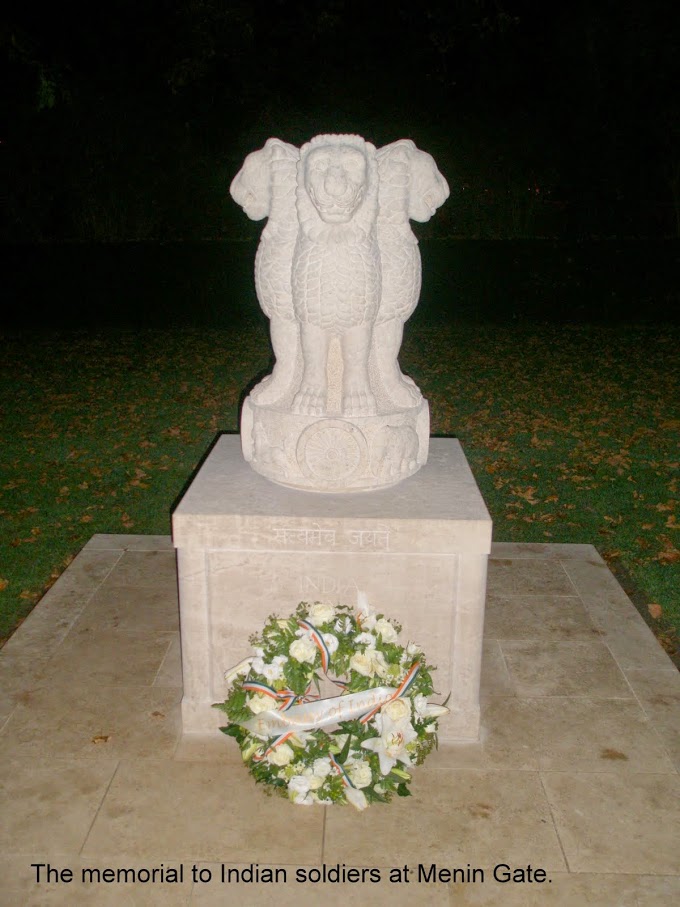

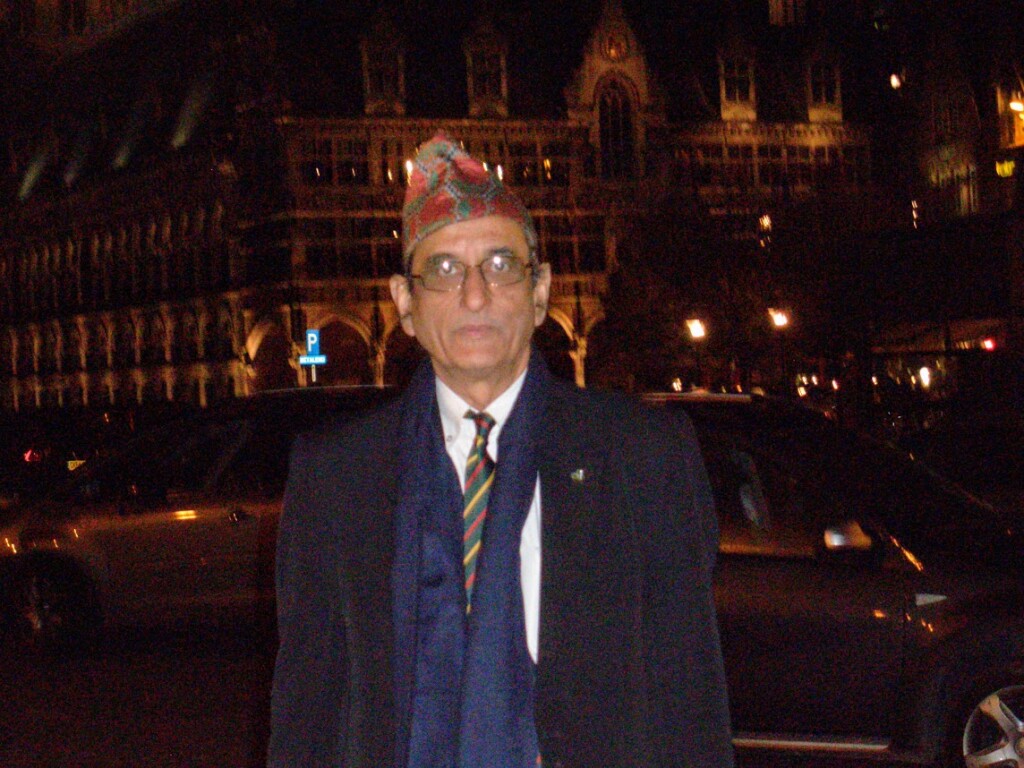
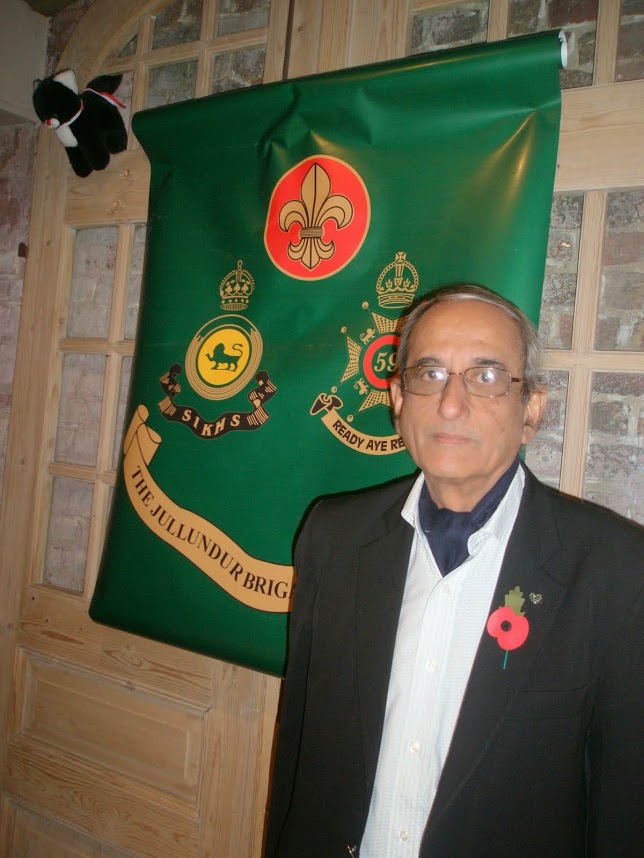
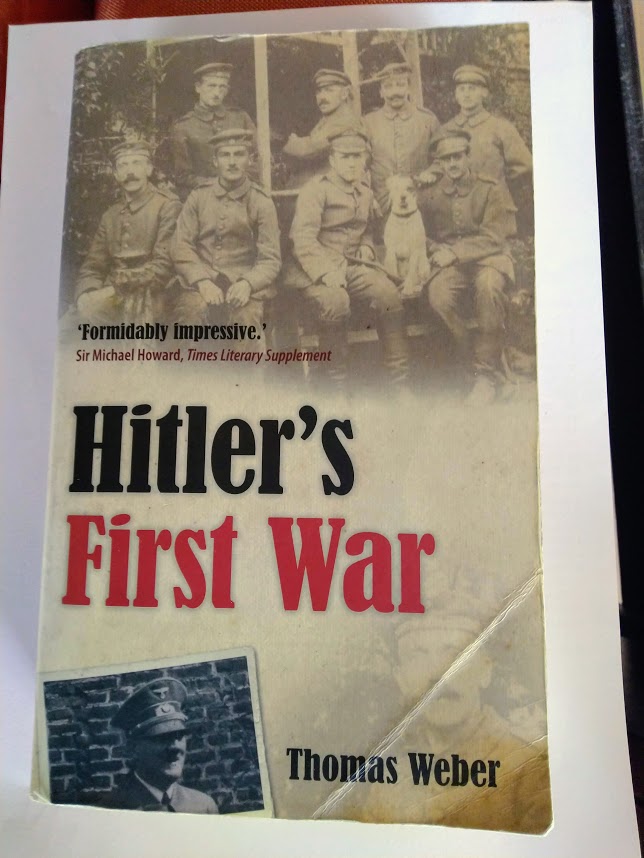
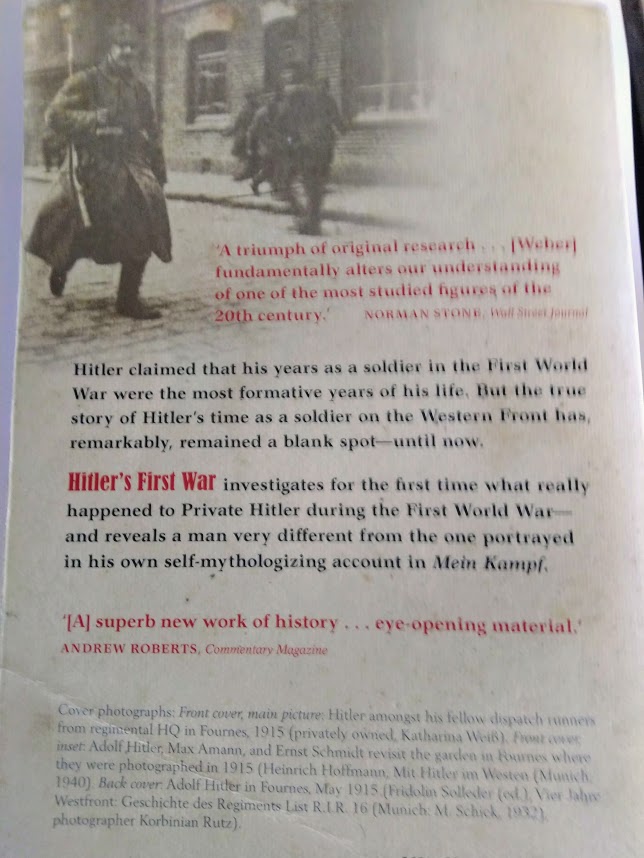
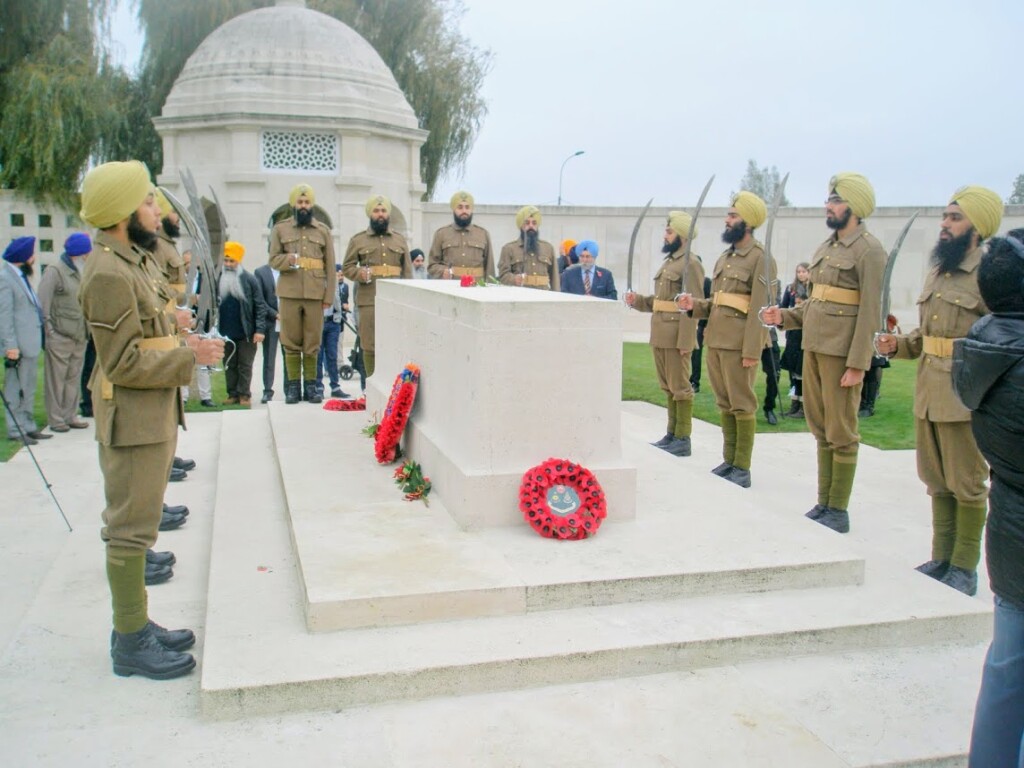
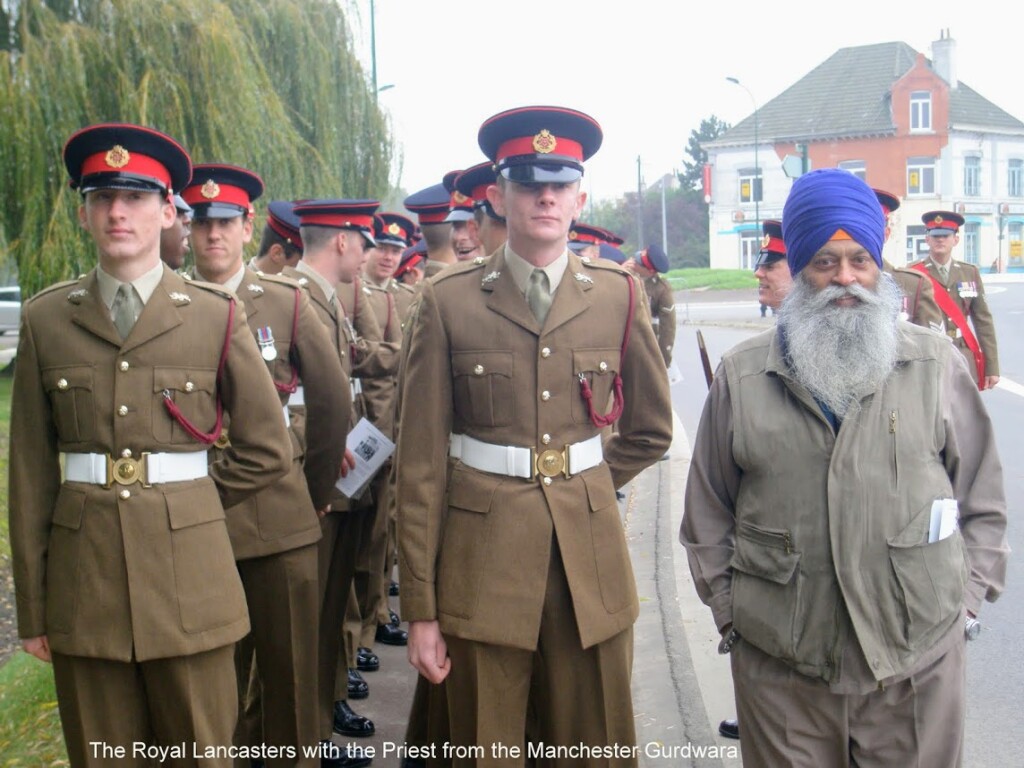







Absolutely outstanding.
Thanks for the beautiful piece of history.
Gulu Hora
to me
Very interesting! Thanks for sharing sir.
Everything forwarded by you is eminently readable.
Cheers
Gulu Hora.
As I was going through the text, embellished with the pictures, one question came to my mind, repeatedly. Great Britain had at least forty colonies when the World Wars were fought. They recruited more than two million soldiers from India and Nepal. But how is it that they did not enlist men from the other colonies, some of which had a substantial population. Burma, Malaya, Kenya and South Africa did not contribute to the war effort.
The answer which I have been able to figure out is that Indians had ‘soldiering’ traditions and had the ability to use weapons. It also seems to me that despite the freedom movement, the British considered Indians to be more trustworthy. On both counts, their judgement proved right. And now, they are acknowledging their gratitude in a befitting manner.
Surjit
I had read about all these battles and the heroism if the Indian soldiers. Had seen the names of the units on the walls and floor of Arc De Triomph.
You Sir have brought back memories and given life to them.
I must visit these monuments when I go next to France.
Warm regards,
Vivek
John Feltham
Jul 19, 2021, 1:15 PM (21 hours ago)
to surjit
Dear Sir,
I was recently sent this email “see below” which contained a very interesting article by – Dr. Anand Kumar Sethi. Unfortunately, there wasn’t an email address given for him.
A comment or two on the excellent article.
Dr. Anand Kumar Sethi writes…
“In July 1927, the ‘Last Post’ was played for the first time by buglers from the Somerset Light Infantry. Since 1928, buglers from the Last Post Association have been playing the Last Post in this very spot every night at 8 p.m., regardless of the number of attendants or weather conditions.”
This is not quite correct.
WWII came along and the Germans were back in Belgium and France.
The Belgians were not able to carry out their nightly service.
So the ceremony was moved, to of all places, the Brookwood Military Cemetery in Surrey in the UK for the duration. Where the ceremony was carried out until the German surrender where upon it returned to Ypre.
You can see this mentioned on Wikipedia at…
https://en.wikipedia.org/wiki/Menin_Gate
“Hence every evening at 20:00, buglers from the Last Post Association close the road which passes under the memorial and sound the “Last Post”.[27] Except for the occupation by the Germans in World War II when the daily ceremony was conducted at Brookwood Military Cemetery, in Surrey, England, this ceremony has been carried on uninterrupted since 2 July 1928.[28] On the evening that Polish forcesliberated Ypres in the Second World War, on 6 September 1944 the ceremony was resumed at the Menin Gate despite the fact that heavy fighting was still taking place in other parts of the town.”
I am an RAF Vet who moved to Australia in 1969.
I was educated in India at La Martiniére College in Kolkata and Victoria School in Kurseong.
I visited the Menin Gate in October of 2012.
I also visited the Commonwealth War Graves Commission Cemetery in Heverlee, Belgium, where there are three RAF Air Crew officers, who were awarded Posthumous Victoria Crosses during WWII. One of these men was an old boy of Victoria School in Kurseong. I laid a wreath on the grave of the Victoria School old boy, a Ft. Lt Pilot who was killed on the first 1,000 Bomber raid on Cologne.
The e-mail ID of Dr Sethi is given in the post. Kindly get in touch with him for any further information which you may need.
Surjit
Forwarded to all my friends.
Gangadharan
EME Journal Eme
8:23 AM
to me
How true sir. Their respect for their martyrs is far more than that displayed by an Indian Citizen on average. An excellent read. Regards
Editor EME Journal
Sir. Indeed great piece to the legacy of brave indian soldier. The motivation to do the unthinkable acts of bravery, righteousness etc., comes not from far lands but the land called Bharat.
The land of RAM, KRISHN, ARJUN, GAUTAM, ASHOK, AND SANT SIPAHI LIKE GURU GOBIND SINGH AND LONG LIST THAT FOLLOWS..
As India reclaims its lost civilizational position, Iam quite sure there are many new chapters being added every moment.
Simply Brilliant
What an extraordinary piece of forgotten history of our brave soldiers, unsung in their motherland, respected and celebrated in other lands. Why it is not part of school curriculum, where only the bravery of Mogul rulers is taught.
How free India respects it’s fallen soldiers?
National War Memorial of our fallen soldiers was conceptualized after 7 decades of independence, sanctioned and fast tracked by PM Modi’s in 2015 and inaugurated in Jan 19.
However, the Govt’s of India remembered the sacrifice of 34844 policemen after indipendence, much earlier in 1984 and built a steel monolith in Chanakyapuri in , (ironically sanctioned by BJP’s late Bajpayee, was pulled down by court order for violating environmental norms, reenacted and inaugorated by PM Modi in Oct 2018.
A strange country!
Very thankful to you to post this. Excellent effort and commitment. Way to go.
However, at another level, I am sad at the level of consciousness of my ancestors to decide that Indians should die to protect those to whom their families were practically slaves. No other race has ever been so loyal to their masters as us. That explains why we have been under foreign rule for some centuries.
Of course, this has nothing to do with my salute to the loyalty of the soldiers themselves.
And thank you, again.
Jai Oberoi
to me
Magnificent
Brig JS Oberoi
Harbhajan Singh
8:54 AM (5 hours ago)
to me
Thank you very much Surjit Ji. Enjoyed reading it. Warm regards.
HS
satish bhandari
8:02 AM (6 hours ago)
to me
Thank you very much for your mail.
It was wonderful to
read the wonderful story.
Regards.
Karan Natarajan
Jul 17, 2021, 10:51 PM (15 hours ago)
to me
Thank you Sir for the blog.
Earlier, I cherished another reading – Hira Singh When India came to fight in Flanders – the book available at Project Gutenberg.
Warm regards and God bless you with long life and health
Hariprasad Pps
Jul 17, 2021, 10:47 PM (15 hours ago)
to me
Dear General
What do you think of India’s future in the presence of China? I personally consider war is inevitable. Neither will win. Some destruction on both sides is inevitable. What is your considered opinion?
You are a veteran. I am a layman.
I request you to educate me.
Regards
Hariprasad
surinder mehta
Sat, Jul 17,
to me
Thank you, Sir. Hope you and ma’am are doing well.
It is a long narrative. So I will read it in the morning. Time to bed now.
Why do we call them white? Why don’t we call them albino? Why do we call blacks? why could we not coin a better word for them?
Respectfully,
Gen Mehta
Arun Bewoor
Sat, Jul 17, 9:42 PM
to me
WELL WRITTEN GENERAL. DEEDS OF VALOUR WE MUST ALWAYS REMEMBER. THAT IS WHAT HISTORY IA ALL ABOUT
Arun Bewoor
narayan chatterjee
Sat, Jul 17,
to me
Very educative and interesting reading which most of us are unaware..a great legacy of Indian Military History.
Amazing research by Dr. Sethi.
Best regards
Narayan Chatterjee
A ” Gem ” of a chronicle on Indian Soldiers’ s contributions at the Flanders during the First World War . I wish we have access to more such detailed account of our brave soldiers and also more monuments within India to remember them! It was an extra ordinary experience to even go through the narrative.
Thanks to Dr. Anand Kumar Sethi for this wonderful article.
Ever since the Cromwell episode, the British solution to civilian control of the military has been to have a small army and a powerful navy. But, following the Roman example, they also formed alliances. One thing led to another and somehow, these alliances led to the British empire.
The Indian Army and the British Navy were the two pillars of the British empire. However, the Indian Army has been too modest to stake their claim of being the most successful army in human history.
Another side of the coin is that the First World War wiped out an entire generation of young Europeans. It marked the beginning of the end of European domination of the world. It took another world war to complete the process and bring the colonial era to an end.
History is as controversial as politics. And nobody has changed history so much as the historians. But we are all agreed on the exemplary bravery of the Indian soldier.